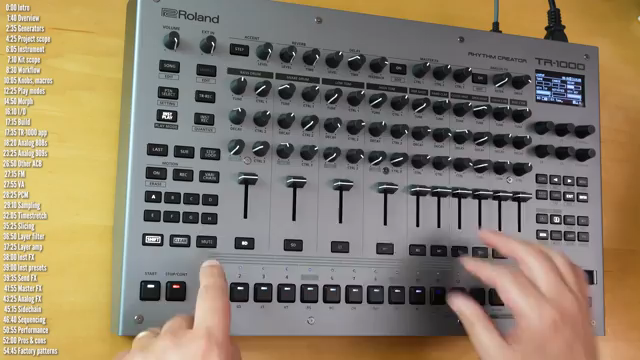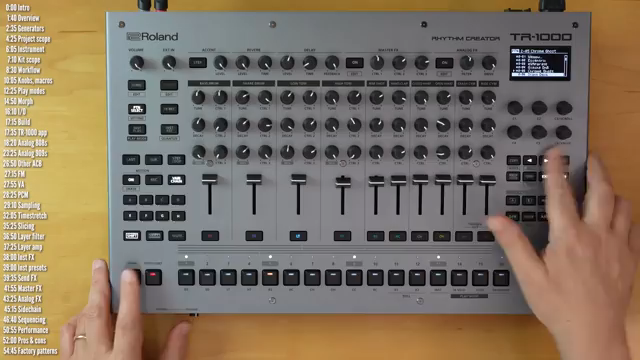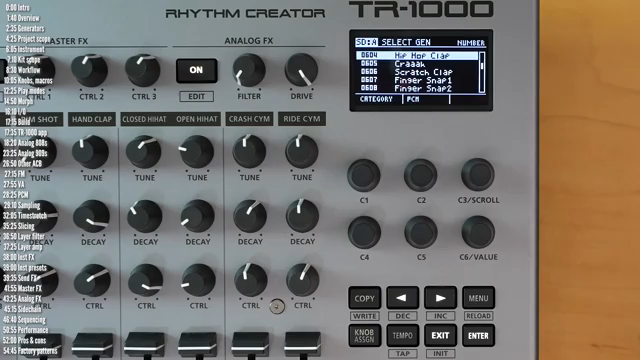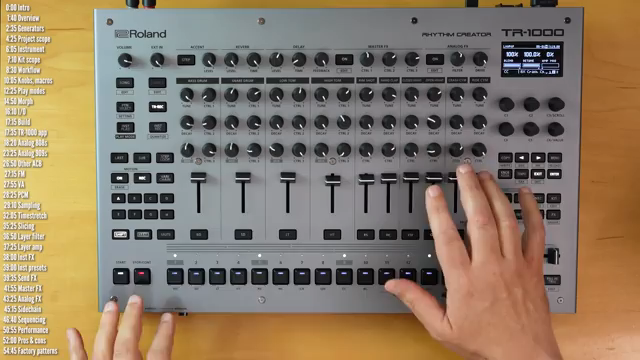Dive into the wild world of the Roland TR-1000 drum machine in Loopop’s latest video. This beast combines analog grit with digital finesse, offering up a plethora of features that are both gripping and bewildering. Learn about its analog circuits, digital models, and transformative sampling capabilities for the ultimate rhythmic experience.

2. October 2025
JET
loopop Breaks Down the Roland TR-1000: A Proper Geezer of a Drum Machine
A New Beast on the Block
In the video, Loopop introduces us to the Roland TR-1000, highlighting it as Roland’s new flagship drum machine. This isn’t just any release; it’s a notable pivot for Roland, embracing physical analog circuits derived from the legendary 808 and 909 models. However, this isn’t a mere reissue; it’s a machine with a modern twist, offering a bevy of digital drum synth models that Roland’s become known for. With modern sampling, slicing, and sequencing, the TR-1000 is not just another drum machine – it’s a comprehensive tool for sound creation. Loopop sets the stage to explore its capabilities, from its analog sounds to its digital prowess, all while planning to lay out its strengths and weaknesses compared to its drumming counterparts. And for the icing on the cake – he teases a playthrough of its factory patterns at the conclusion.

"TR-1000 is the new flagship drum machine from Roland."
Deep Dive into Features: An Analogue-Digital Hybrid

"Each of these 14 voices can use one of several engines or generators."
Loopop dives into a granular overview of the TR-1000, shedding light on its 14-voice architecture. Each of its 10 main tracks can trigger dual layers, broadening the possibilities of sound complexity by mingling distinct voices. Each layer can have its unique generator, filter, and amp, but the shared parameters like effects and controls further add to its intricate design. There’s a cornucopia of engines – analog, ACB emulations, FM, virtual analog, PCM, and samples. The analog heart is hardwired based on the revered 808 and 909 circuits, yet Roland’s decision means only one per kit in the analog domain. Loopop deftly guides through this hall of sonic choices, from ACB models that offer digital counterparts with a wider parameter range to bundled sounds and even custom sampling options like time-stretching. It’s audibly clear that Roland’s thrown the kitchen sink at this one, making it a formidable presence in any setup.
Conquering Sound Design
In his methodical style, Loopop explores the nuances of sound design capabilities that the TR-1000 brings to the table. Every track transforms into a playground, equipped with a multi-mode filter, EQ, and various amp arrangements, each complete with distinct features like envelopes and transient shaping. The versatility shines through with a well-stocked effects library – drive, crusher, filter, and more enrich each sonic expression. Furthermore, an innovative addition is the single LFO per track, capable of being assigned to numerous destinations, granting more room for creative sound manipulation. Loopop appreciates the sophisticated workflow powered by intuitive module selection and parameter edits via the panel’s encoders. It’s a testament to how Roland is catering to artists who hunger for uncompromised sonic craftsmanship.
Pushing Buttons: Controls and Connectivity
Loopop spends ample time demonstrating the TR-1000’s myriad of controls, which includes assignable knobs and a distinct focus on dual-layer tracks – a playground for tone tinkerers. Encoders control tune, decay, and mix, with custom assignments for those daring enough to dive deeper. Changing focus to connectivity, the TR-1000 extends an open embrace with a range of I/O options from headphone outputs to individual mono outputs, perfect for external processing. Though the sheer mass is notable, Loopop reassures its hefty build is all metal, save for slightly wobbly faders. Regarding the software side, Roland offers an app for parameter visualisation and sample editing. It’s a comprehensive effort to ensure this drum machine is as pliant in the studio as it is on stage. Loopop’s thesis is simple: this machine, once set up, is primed for relentless gigging and mangling.

"If a knob is assigned to just one parameter, then it'll just say the parameters name on the screen."
Hitting the Play Modes: Morph and More
Now, it’s time to unleash what makes this gear unique – the play modes. Loopop walks us through the morphological wonderland, where a single slider can transform entire soundscapes. The morph capability allows seamless alterations across different sound states, making it an essential live performance tool. An impressive fifteen different morph states ensure that users can continually reinvent their musical narrative with each slide. Much like a gig where each song is a little different, the TR-1000 encourages artists to be bold with their transitions. Loopop accentuates the array of sub-modes that further enhance playability – velocities, slice modes, and snapshot modes – all geared to put the power back into the hands of the musician. Roland has packed this machine with umpteen ways to bring your beats to life, veering from the controlled to the chaotic with a mere flick.
Ending on a High Note: Pros, Cons, and Final Thoughts

"It's got a good taste of Roland's classic analog voices and plenty of digital ACB synth models."
Loopop approaches the conclusion with a balanced critique. He notes the TR-1000’s prohibitive size and price, but doesn’t shy away from celebrating its unmatched feature set geared towards performance and creativity. The unit is packed full of flexibility, from time-stretching samples to multilayer sound crafting. However, he acknowledges that mastering the multitude of parameters can take time, but once configured, the beast is raring to go. Loopop appreciates the pleasantly surprising mix of analog grit and digital elegance, claiming it’s a worthy contender in the drum machine arena. Yet, he also yearns for future firmware updates to add even more functionality, hinting that this drum machine has a future as dynamic as its capabilities. It’s an impassioned nod to Roland’s bold move – a call for them not to rest on their laurels but continue to push the envelope.
Latest articles
Watch on YouTube:
https://www.youtube.com/loopop
Links from loopop: